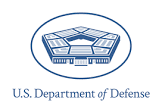US Department of Defense

Estimated electricity consumption
N/A
Countries of production presence
N/A
The US Department of Defense (DoD) is the largest and most complex organization in the world, with a budget of over $700 billion and a workforce of approximately 1.3 million active-duty military personnel, 800,000 reserve personnel, and 732,000 civilian employees. The DoD is responsible for providing military forces to deter war and protect the security of the United States. The DoD operates in the Sovereign Agencies sector, which refers to government agencies that have the authority to act on behalf of a sovereign nation.
Decarbonisation is a key issue for the DoD, as it is for many organizations around the world. The DoD recognizes the importance of reducing its carbon footprint and has set ambitious goals to achieve net-zero emissions by 2050. The DoD's decarbonization efforts include reducing energy consumption, increasing the use of renewable energy, and investing in new technologies that can help reduce emissions.
One of the ways the DoD is working to reduce its carbon footprint is through corporate energy initiatives. The DoD has implemented a number of energy efficiency programs that have helped to reduce energy consumption and save money. For example, the DoD has installed energy-efficient lighting, heating, and cooling systems in its buildings, and has implemented energy management systems to monitor and control energy use.
In addition to energy efficiency programs, the DoD is also investing in renewable energy. The DoD has set a goal to obtain at least 25% of its energy from renewable sources by 2025. To achieve this goal, the DoD is investing in solar, wind, and other renewable energy technologies. The DoD has also implemented a number of renewable energy projects on its installations, including solar photovoltaic systems, wind turbines, and geothermal systems.
One of the ways the DoD is financing its renewable energy projects is through corporate power purchase agreements (PPAs). A corporate PPA is a long-term agreement between a renewable energy developer and a corporate buyer, in which the buyer agrees to purchase a certain amount of renewable energy at a fixed price over a specified period of time. Corporate PPAs can help renewable energy developers secure financing for their projects, and can provide corporate buyers with a stable, long-term source of renewable energy.
The DoD has entered into a number of corporate PPAs to help finance its renewable energy projects. For example, the DoD has entered into a 25-year PPA with a wind developer to purchase the output of a wind farm in Texas. The wind farm will provide the DoD with approximately 250,000 megawatt-hours of renewable energy per year, enough to power approximately 20,000 homes.
In addition to its corporate energy and renewable energy initiatives, the DoD is also investing in new technologies that can help reduce emissions. For example, the DoD is investing in advanced biofuels that can be used to power military aircraft and vehicles. The DoD is also investing in energy storage technologies that can help to integrate renewable energy into the grid.
Overall, the US Department of Defense is a leader in the effort to reduce carbon emissions and transition to a more sustainable energy future. The DoD's decarbonization efforts include energy efficiency programs, renewable energy projects, and investments in new technologies. The DoD's commitment to sustainability is not only good for the environment, but also helps to ensure the security and resilience of the United States.